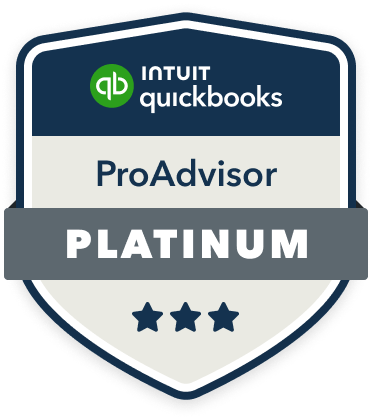|
The Easiest Way to Start Tracking Your Business Finances Download Our Bookkeeping Spreadsheet! |

Here’s the harsh reality: 90% of people who say they want to start a business never will. They’ll spend months crafting the “perfect” business plan, obsessing over logo colors, and waiting for the “right moment.” Meanwhile, the successful 10% are already three steps ahead, filing paperwork and making money moves.
Want to join the doers instead of the dreamers? Let’s cut through the fluff and get your business legally bulletproof, because nothing kills entrepreneurial dreams faster than the IRS knocking on your door.
Before you can start printing money (legally), you need to decide what kind of business beast you’re creating:
Sole Proprietorship: You are the business. Simple, but you’re personally liable for everything.
LLC: The sweet spot for most entrepreneurs. This structure protects your personal assets while keeping things flexible.
Corporation/S-Corp: More complex, but offers serious tax advantages as you scale.
Pro tip: Don’t overthink this. You can always change structures later as your empire grows.
Choosing a business name is like choosing a tattoo in that you’ll live with it for a long time, so don’t pick something you’ll regret. Here’s the reality check:
That “perfect” name you thought of? Someone probably already has it. Go check asap!
Your business name doesn’t have to be clever or cute, but it does need to work for you.
Important: If you’re a sole proprietor using anything other than your legal name, you’ll need to file a Fictitious Business Name form with your county clerk. Yes, it’s called “fictitious,” and no, that doesn’t mean you’re lying.
Every legitimate business needs an Employer Identification Number (EIN). Think of it as your business’s social security number because the IRS uses it to track your money moves.
The good news: Getting an EIN is free and takes about 10 minutes online at https://www.irs.gov/businesses/small-businesses-self-employed/apply-for-an-employer-identification-number-ein-online
The bad news: If you pay someone hundreds of dollars to get your EIN alone, you just got scammed.
Here’s something nobody tells new business owners: When you register your business, your address becomes public record. That means anyone can look up your business and see where you live. Creepy? Absolutely.
Enter the registered agent: your business’s official address shield. They receive legal documents and important mail on your behalf, keeping your home address private. Think of them as your business’s personal bodyguard, but for paperwork.
Benefits of a registered agent:
Every city and state wants their cut, which means you need the proper licenses and permits. This isn’t optional, it’s the price of admission to the business world.
The process:
Find your requirements: https://www.sba.gov/business-guide/launch-your-business/apply-licenses-permits
Skip this step, and you’ll get an expensive education in government penalties.
Mixing business and personal finances is like wearing pajamas to a job interview; technically possible, but you’ll look like an amateur. A business bank account isn’t just professional; it’s essential for:
Your business banking checklist:
View our article on finding the best bank account for your business here.
Your brand is what people think about when they hear your business name. It’s your reputation, your promise, and your competitive edge all rolled into one.
Brand essentials:
Choose your weapons: Pick your CRM, scheduling platform, accounting software, and website management system early. Switching later is possible, but painful like changing the engine of a moving car.
Here’s a money-saving secret most new business owners miss: If you’re buying materials, supplies, or services for your business, you can often avoid paying sales tax with a resale certificate.
The process:
If you collect taxes: You’ll need a CDTFA account to stay compliant.
Every professional business needs a paper trail. Here’s your document starter pack:
Company letterhead (because first impressions matter)
EFT document with all your business details (bank info, license numbers, contact information)
W9 form (vendors will ask for this and you need to make sure you get them for others)
590 form (only if you want income tax withheld, this is not required for everyone)
Pro tip: Keep digital copies of everything. Paper gets lost, computers get backed up.
Here’s the uncomfortable truth: If you don’t pay yourself, you’re running a hobby, not a business. Paying yourself isn’t selfish! It’s essential for long-term success. It keeps you motivated, validates your efforts, and forces you to track profitability.
How to pay yourself depends on your business structure:
Sole Proprietorship: Take owner draws from profits. No payroll taxes come out, but you’ll pay taxes on everything when you file your personal return.
LLC: Similar to sole proprietorship in which you take distributions and file your Statement of Information yearly (the cost in California is $25 if you file on time, if not, it’s $250. Don’t be late; penalties hurt).
S-Corp: You become an employee of your own business. Pay yourself a reasonable salary (with payroll taxes), then take additional profits as distributions (no payroll taxes on these). This can save serious money on self-employment taxes.
Taxes aren’t optional, and ignorance isn’t a defense. Here’s what you’re signing up for:
Types of taxes you’ll face:
Sales tax (only if you sell products, paid quarterly or annually)
Income tax (know your state rate!)
Estimated quarterly taxes (pay as you go, not all at once)
Self-employment tax (15.3% on your profits… ouch)
Survival tips:
Want access to grants, loans, and contracts that others can’t touch? Get certified as a small business. The government and large corporations are actively looking to work with certified small, diverse businesses.
Certification options:
Start here: https://certify.sba.gov/prepare
Fair warning: The paperwork is extensive, but the opportunities make it worthwhile.
Here’s what separates successful entrepreneurs from wannabes: Action beats perfection every single time.
While you’ve been reading this guide, someone else just filed their LLC. While you’re still “thinking about it,” they’re already making their first sale. The perfect business plan doesn’t exist, the perfect time never comes, and the perfect name doesn’t matter as much as you think.
Your next move: Pick ONE step from this guide and complete it today. Not tomorrow, not next week, today.
Your future self will thank you for starting now instead of waiting for someday. And your bank account? It’ll definitely thank you.
Ready to stop dreaming and start building? The only thing standing between you and your business dreams is the decision to take the first step. What are you waiting for?
Need help completing any of these steps? Make an appointment with us and we can get you up and running in no time! You’re welcome.
No pressure, just a friendly conversation to help you move forward.
Myles Ink provides expert bookkeeping, payroll, and financial management solutions, helping small business owners stay organized, compliant, and confident in their finances.


Copyright © 2018 – 2025 Myles Ink. All Rights Reserved. Privacy Policy | Terms of Service | Accessibility Statement | Sitemap